Table of Contents
Satin Doll (Jazz Play Along with sheet music) by Duke Ellington (from Sophisticated Ladies)


Satin Doll – Jazz Standard
In early 1953 Duke Ellington left Columbia Records and signed a major contract with Capitol Records. On April 6, he held the first recording session, which included “Satin Doll,” “Without A Song,” and “Cocktails For Two.” It appears that Ellington originally wrote the melody for ‘Satin Doll’ and Billy Strayhorn wrote the lyrics, but these were not considered commercially viable. Five years later Johnny Mercer, co-founder of Capitol Records, wrote a new letter, which is what is known today and is unanimously praised by critics.
Please, subscribe to our Library.
If you are already a subscriber, please, check our NEW SCORES’ page every month for new sheet music. THANK YOU!
It is unknown to whom the name ‘Satin Doll’ refers. Some say that it is Strayhorn’s mother, while others, such as Mercer Ellington, suspect that the mysterious woman is Edna, Duke’s wife, who, for her part, always claimed that she was the recipient of the song.
In 1969, pianist Earl Hines placed an ad in Downbeat magazine wishing Duke Ellington a happy seventieth birthday, but in small print he added: remember I wrote ‘Satin Doll’. Hines never elaborated on his surprising claim, but he recorded the song several times, and included it on an Ellington tribute album.
Billy Strayhorn is the author of “Chelsea Bridge” (1941), “Rain Check” (1942), “A Flower Is a Lovesome Thing” (1944), “Lotus Blossom” (1947), and “Lush Life” (1949). In collaboration with Ellington he composed ‘Day Dream’ (1941), ‘Something to Live For’ (1939) and ‘Satin Doll’ (1953), among many other songs.
Jazz. Featured Performances
Instrumental
| ARTISTS | DATE | PERSONNEL |
| Duke Ellington Famous Orchestra | 1953.04.06 | Duke Ellington (p, dir), Cat Anderson, Willie Cook, Ray Nance, Clark Terry (tp), Quentin Jackson, Juan Tizol, Britt Woodman (tb), Russell Procope (as, cl), Rick Henderson (as), Paul Gonsalves (ts), Jimmy Hamilton (cl, ts), Harry Carney (bars, cl), Wendell Marshall (b), Butch Ballard (d) |
| Victor Feldman Trio | 1958.01.22 | Victor Feldman (vib, p), Scott LaFaro (b), Stan Levey (d) |
| Johnny Hodges & All The Duke’s Men | 1958.04.05 | Johnny Hodges (as), Billy Strayhorn (p), Jimmy Woode (b), Sam Woodyard (d) |
| Jo Jones Trio | 1958.04.30 | Ray Bryant (p), Tommy Bryant (b), Jo Jones (d) |
| Red Garland Trio | 1959.10.02 | Red Garland (p), Doug Watkins (b), Charles “Specs” Wright (d) |
| Wes Montgomery Trio | 1959.10.05 | Wes Montgomery (g), Mel Rhyne (org), Paul Parker (d) |
| Coleman Hawkins Sextet | 1962.08.15 | Coleman Hawkins (ts), Roy Eldridge (tp), Johnny Hodges (as), Tommy Flanagan (p), Major Holley (b), Eddie Locke (d) |
| McCoy Tyner Trio | 1963.03.04 | McCoy Tyner (p), Steve Davis (b), Lex Humphries (d) |
| Jimmy Smith Trio | 1965.06.15 | Jimmy Smith (org), Kenny Burrell (g), Grady Tate (d) |
| Duke Ellington | 1972.04.10 | Duke Ellington (p), Joe Benjamin (b), Rufus Jones (d) |
| Earl Hines | 1973.03.27 | Earl Hines (p) |
| Joe Pass Trio | 1974.06.21 | Joe Pass (g), Ray Brown (b), Bobby Durham (d) |
| Oscar Peterson & Clark Terry | 1975.05.18 | Oscar Peterson (p), Clark Terry (tp, tpa) |
| Milt Hinton Trio | 1984.09.03 | Milt Hinton (b), Jane Jarvis (p), Louis Bellson (d) |
| Oscar Peterson Quartet | 1998.07.22 | Oscar Peterson (p), Ulf Wakenius (g), Niels-Henning Ørsted Pedersen (b), Martin Drew (d) |
| Jessica Williams | 2000.09.?? | Jessica Williams (p) |
Vocals
| ARTISTS | DATE | PERSONNEL |
| Ella Fitzgerald | 1963.07.15 | Ella Fitzgerald (voc), Al Aarons, Joe Newman, Don Rader, Fip Ricard (tp), Henry Coker, Urbie Green, Grover Mitchell, Benny Powell (tb), Eric Dixon, Frank Foster, Frank Wess (as, ts, fl), Marshall Royal (as, cl), Charlie Fowlkes (bars), Count Basie (p), Freddie Green (g), Buddy Catlett (b), Sonny Payne (d), Quincy Jones (dir) |
| Nancy Wilson | 1963.10.08 | Nancy Wilson (voc), Al Porcino, Carmell Jones (tp), Harold Land (ts), Wild Bill Davis (org), Joe Pass (g), Jimmy Bond (b), Kenny Dennis (d) |
| Kenny Burrell Orchestra | 1975.02.?? | Kenny Burrell (g), Jerome Richardson (ts), Jimmy Smith (org), Jimmy Jones (p), Stanley Gilbert (b), Jimmie Smith (d), Ernie Andrews (voc) |
DUKE ELLINGTON – Half a century of jazz
The musical life of Edward Kennedy Ellington is quite a chapter in the history of jazz. They are fifty years of constant activity that support him, not only as one of the greatest musicians in the history of his country, but as a round creator, since he served as a composer, orchestra leader, arranger, author and soloist.
Edward Kennedy was born on April 29, 1899, in Washington as the son of James Edward Ellington and Daisy Kennedy. James worked as a butler for a doctor’s family, and Daisy was the daughter of a well-to-do family. Edward’s personality took shape between gentle expressions, etiquette and formality.
In his house there were not one, but two pianos and thanks to them, he learned music from adolescence, a time when Edward Kennedy named himself duke without anyone being able to tell him otherwise.

His professional career took shape towards commercial design, but in 1918 the National Association for the Advancement of Colored People (NAACP) awarded him a scholarship to study art in New York. In that same year he married Edna Thompson and they had a son, Mercer Ellington, a new responsibility that made him rethink the future of his career.
After the end of the fellowship, Duke Ellington briefly returned to Washington, before moving permanently to New York in 1923 with his musician friends Otto Hardwick and Sonny Greer. All three were already well-known at the time for playing dance music in the newly opened bars of Harlem, where Ellington was able to recognize his gifts as a leader of small orchestras. The trio made Club Kentucky a go-to place for fun music.
Duke Ellington’s compositions and arrangements then had an exotic and burning essence. An example of this is the song “East Saint Louis Toodle-Oo”, which also includes excerpts inspired by Chopin’s “The Funeral March”.
In 1927, Ellington and his band were selected to play at the Cotton Club in Harlem, which was nothing more than Carnegie Hall for those who couldn’t get to it, according to Ted Gioia’s The History of Jazz.
Without knowing it at the time, the dance shops in that New York neighborhood, like the Savoy and the Cotton Club itself, would be schools and tickets for the future of music in the United States, considering that they also did not exclude white audiences. It was also as if the economic problems that the North American country was going through could not enter these clubs that were open six days a week.
‘Duke’s supremacy during the Cotton Club years not only enabled it to weather the onset of the Depression, but even to thrive at a time when most bandmasters were downsizing,’ writes Gioia.
The crisis of the thirties did not touch Duke, who had the financial capacity to sign the trombonists Juan Tizol and Lawrence Brown, other great names in the history of jazz.
In that same year, Duke appeared in his first Hollywood movie, Check and Double Check, and by 1931 he would be invited to meet President Hoover at the White House, an act unheard of for a black musician at the time.
It’s 2014 and Lady Gaga, with her hair dyed blue, repeats the scatting –jazz vocal improvisation- of “It don’t mean a thing (if it ain’t got that swing)”, one of the most popular songs of the gender. In 1932, when this song composed by Duke Ellington with lyrics by Irving Mills was recorded, experts probably already imagined it as one of the best jazz works of the era and also of its authors. The piece survived the turn of the century and several more generations, performed by the most popular singers of the day.
The Depression era meant the opposite for Duke Ellington, for by 1933 he had already recorded other hits from his career, songs that would enter the American staple repertoire. “Mood Indigo”, “In a Sentimental Mood”, “Sophisticated Lady” and “Solitude” would be replicated at that time due to the success they had among people who wanted to dance, but also among jazz players, who turned these pieces into standards of the gender.
In 1934 the pianist composed ‘Symphony in black’, a piece considered exalted due to its complexity. The nine-minute suite tested Duke’s ability as a bandleader, composer and musical genius beyond the formula to make everyone dance or go into a melancholic state. “Symphony in black”, however, summed up Duke Ellington’s ability to make the audience go through those two atmospheres in less than ten minutes.
That same year everything was about to change for American culture, thanks in part to the work that Duke and his contemporaries had already done. The dry law in the North American country had ended and the music was beginning to reach the masses. Swing and booze were a glitzy mix for the post-Depression years.
Soon, society understood that neither jazz nor alcohol posed a threat to its status quo. On the contrary, white musicians such as Benny Goodman or Glenn Miller also took up swing, inspired by Ella Fitzgerald, Fletcher Henderson and Duke Ellington and thus began the best years of this musical style.
In 1937 Ellington recorded another piece of music that musically surpassed anything he had done before: ‘Caravan’. Considered one of the epitomes of jazz. The year 2014 brought her back with a bang after her mention in Damien Chazelle’s film Whiplash.
“Caravan” was composed by trombonist Juan Tizol, who sold the rights to his song for $25 to Ellington without knowing its true value. Once arranged and recorded with a big band led by Ellington himself, “Caravan” conquered the charts. This recording featured Cootie Williams on trumpet, Tizol on trombone, Barney Bigard on clarinet, Harry Carney on saxophone, Billy Taylor on double bass, and Sonny Greer on drums, members who would follow Ellington for decades to come.
The scope of this piece is difficult to measure because of the potential it offers to improvise, add solos and evolve, as it did through Wes Montgomery in 1964 and Wynton Marsalis in 1986.
And although Duke was an important player in the swing era, he preferred not to simplify the melodies. According to the National Museum of American History, the pianist was not particularly interested in creating a good rhythm for dancing –although he did it-, but rather in exploring more of his musical imagery.
“When swing music and dance became a national obsession in the late 1930s, Ellington stood above them all and went his own way,” reads the Smithsonian Institute and Smithsonian Jazz site.
Duke and his band closed the golden decade of swing by touring Europe.
In 1938 his orchestra was joined by another relevant element for the next few years: the young arranger and composer Billy Strayhorn, who did not take long to give the orchestra a hit: “Take the ‘A’ Train”, a piece that shortly before had thrown away as it is considered little new.
Billy found inspiration for the lyrics of this piece in the new subway line in New York that made people confused to get to Harlem.
“You must take the A Train
To go to Sugar Hill, way up in Harlem”
The 1941 song would be recognized in 2000 as one of the 100 best of the 20th century, according to NPR.
The train that leads to Carnegie
Already far from commercial swing, Duke Ellington ventured to continue with his complex compositions. ‘Black, Brown, Beige,’ a three-movement suite or ‘a parallel to American Negro history,’ as Duke presented it at Carnegie Hall, was a straightforward statement about the racism African Americans faced, but also , many black musicians at the time.
Despite the relevance of his complaint, he was harshly criticized for his performance at one of the most important jazz events in the world, as Claudia Roth wrote for The New Yorker. Such an incident would be far from the end of his career. In any case, it heralded a new era, for from 1943 to 1947, Duke Ellington returned to Carnegie Hall with a different repertoire and without provocation.
In the following years, the big bands -although they managed to support themselves financially through royalties-, ceased to be so profitable, since swing began to lose its touch. Meanwhile, Ellington was still writing long movements like ‘Do Nothing till You Hear from Me’ from 1943 and ‘The Perfume Suite’ from 1945.
Before the crisis, between 1947 and 1955, some important members of the band went to others. Among the few important creations of these years were ‘Harlem’, fourteen minutes and ‘Satin Doll’, possibly his last success.
What was left for Ellington was nothing more than reinterpretation, which was not necessarily a sign of failure. He proved this in 1956 when he performed at the Newport Jazz Festival, where he performed the original 1937 Diminuendo and Crescendo in Blue. This performance is considered one of the 50 greatest moments in jazz.
The Pulitzer and other merits
With the collaboration of saxophonist Paul Gonsalves at the Newport concert, Duke’s career was revived. Critics once again recognized him as the respected musician and bandleader he always was. Shortly thereafter he was named an honorary ambassador for jazz and began touring all continents.
In 1959 the National Association for the Advancement of Colored People, with whom he collaborated throughout his career, awarded Ellington its highest award, previously awarded to Martin Luther King and other civil rights fighters. However, the African American community questioned the decision asking what Ellington had done to deserve it, arguing that during his career the pianist had played for a segregated public in the southern region of the United States, to which Duke Ellington simply responded with a : ‘everybody does’. And he was right.
Claudia Roth collected Ellington’s most extensive response to this question. “They haven’t been listening to our music. (…) We have been talking for a long time about what it is to be black in this country, ”she said.
From then on he never left his activism aside and made it more and more evident. He recorded a new version of ‘Black, Brown, Beige’ called ‘Come Sunday’ with Mahalia Jackson on vocals and protested with the students against the discrimination that black youth suffered in establishments.
Something similar happened in 1965 when the jury for the Pulitzer Prize for Music nominated him, but in the end he decided not to award the distinction to anyone. They argued that Duke Ellington did not meet the terms of what the award represented.
The pianist told music critic Nat Hentoff that he was very frustrated by this decision, but that he was not surprised. “(…) most Americans still take it for granted that only European-based music – classical music – is the one that should be respected. In this country, jazz has always been the kind of man you wouldn’t want your daughter to associate with.’
During his last assets, Duke Ellington continued to compose and arrange music. In 1967 he wrote an album called ‘And His Mother Called Him Bill’ with a dedication to his colleague and great friend Billy Strayhorn, after his death that same year.
On May 24, 1974, the Duke of Jazz, a noble title that did him justice, died of pneumonia aggravated by lung cancer that he suffered from. Thousands of people gathered to see him off.
The musical Pulitzer Prize would be awarded to him posthumously in celebration of his 100th birthday, in 1999, in recognition of his musical contribution.
Browse in the Library:
| Artist or Composer / Score name | Cover | List of Contents |
|---|---|---|
| William Best I Love You For Sentimental Reasons (Jazz Standard) | William Best I Love You For Sentimental Reasons (Jazz Standard) | |
| William Eveleth – Blues Jazz and Rock Riffs For Keyboards |
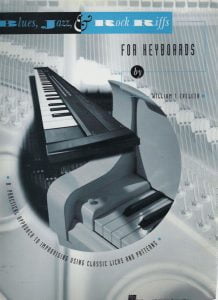 |
|
| William Gillock In Old Vienna Musescore File.mscz | ||
| William Gillock Valse Etude In Romantic Style Musescore File.mscz | ||
| William Joseph – Within (Songbook) (William Joseph) |
 |
William Joseph – Within (Songbook) (William Joseph) |
| William Robinson – My Girl | ||
| William Russo Composing Music A New Approach (ebook) |
 |
|
| Willie Dixon Preacher Of The Blues (2011) Mitsutoshi Inaba (Book) Biography |
 |
|
| Willie Fugal S Blues Piano transcription |
 |
|
| Willie Nelson – Always on My Mind Sheet Music |
 |
|
| Willie Nelson – On My Mind | ||
| Willie The Lion Smith – Finger Buster transcription |
 |
|
| Willie The Lion Smith Echo of Spring transcription |
 |
|
| Willow Weep For Me Words And Music By Ann Ronell 1932 Jazz Standard (Vintage sheet music) |
 |
|
| Wim Mertens – American Minimal Music La Monte Young Terry Riley Steve Reich Philip Glass |
 |
Book La Monte Young Terry Riley Steve Reich Philip Glass |
| Wim Mertens – Close Cover | Wim Mertens – Close Cover | |
| Wim Mertens – Struggle For Pleasure | Wim Mertens – Struggle For Pleasure | |
| Wim Mertens – Time Passing |
 |
|
| Wim Mertens Humility |
 |
|
| Wim Mertens Lir |
 |
|
| Windham Hill piano sampler |
 |
Windham Hill piano sampler |
| Windy Whistle (Le Renard et l’Enfant OST) Alice Lewis | ||
| Wings (McCartney) – Greatest Hits |
 |
Wings sheet music |
| Winifred Atwell Album Of Rags No 1 Original arrangements Vintage songbook |
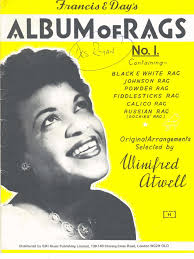 |
Winifred Atwell Album Of Rags No 1 Original arrangements Vintage songbook |
| Winifred Atwell Marguerite Monnot The Poor People Of Paris ( La Goualante Du Pauvre Jean) Piano Solo |
 |
|
| Winnie The Pooh The Honey Tree Sheet Music (Disney) |
 |
Winnie The Pooh The Honey Tree Sheet Music (Disney) |
| Winter Sonata O.S.T. (Ryu) | ||
| Winter Wonderland Other Christmas Favorites Songbook Piano Vocal guitar Chords |
 |
Winter Wonderland and Other Christmas Favorites Songbook Piano Vocal guitar Chords |
| Wish You Were Here – Pink Floyd (Musescore File).mscz | ||
| Within Temptation – Our Solemn Hour | ||
| Without you (Maria Carey) | ||
| Without You (Mariah Carey Piano Arr ) (Musescore File).mscz | ||
| Wiz Khalifa & Charlie Puth See You Again (Solo Piano) |
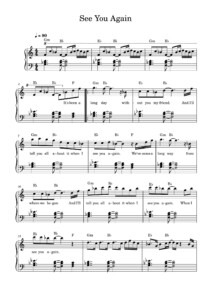 |
|
| Wolf Wagner Paraphrase Über Die Walküre |
 |
|
| Wolfe Richard Legit Professional Fake Book More Than 1010 Songs |
 |
Wolfe Richard Legit Professional Fake Book More Than 1010 Songs |
| Wolfenzon – Stücke für Klavier | Wolfenzon – Stücke für Klavier | |
| Womack, Bobby – Midnight Mover My Autobiography The True Story of the Greatest Soul Singer in the World (Book) |
 |
|
| Woman in love (Barbra Streisand) | ||
| Women Of Pop Rock Songbook Twenty-Two Hot Hits for Easy Piano |
 |
Women Of Pop Rock Songbook Twenty-Two Hot Hits for Easy Piano |
| Wonderful Christmastime -Paul Mccartney (Wings) (Musescore File).mscz | ||
| Wonderful Life – Black (Easy Piano Solo Sheet Music) (Musescore File).mscz | ||
| Woody Allen – A propósito de nada (autobiografía)(2020) |
 |
|
| Woody Allen – Apropos of Nothing (2020) Autobiography | Woody Allen – Apropos of Nothing-Simon and Schuster (2020) Cover | |
| Woody Guthrie This Land Is Your Land (Easy and Intermediate Piano Solo) |
 |
|
| World Hits Of Jazz Standard |
 |
World Hits Of Jazz Standard |
| Wuthering Heights (Ryuichi Sakamoto) | ||
| Wynton Kelly – Autumn Leaves Solo transcription | Wynton Kelly – Autumn Leaves Solo transcription | |
| Wynton Kelly – Dark Eyes Solo Piano transcription |
 |
|
| Wynton Kelly – Dark Eyes Solo Piano Transcription (Musescore File).mscz | ||
| Wynton Kelly – Full transcriptions | Wynton Kelly – Full transcriptions | |
| Wynton Kelly – I Dig of You Solo transcription |
 |
|
| Wynton Kelly – If I should Love You Solo transcription |
 |
|
| Wynton Kelly – Jazz Piano Collection |
 |
Wynton Kelly Piano Collection- |
| Wynton Kelly – Someday my prince will come (Piano solo) |
 |
|
| Wynton Marsalis Trumpet Genius Gourse, Leslie (Book) |
 |
|
| Wynton Marsalis – Caravan (Solo) |
 |
|
| Wynton Marsalis – Darn That Dream (Solo) | Wynton Marsalis – Darn That Dream (Solo) | |
| Wynton Marsalis – Dealfayos Dillema (Solo) |
 |
|
| Wynton Marsalis – Standards (sheet music transcriptions) |
 |
Wynton Marsales – Standards (sheet music transcriptions) |
| Wynton Marsalis In The Court Of King Oliver (Trumpet and rhythm section) |
 |
|
| Wynton Marsalis Omnibook For B Flat Instruments Transcribed exactly from his recorded solos |
 |
Wynton Marsalis Omnibook For B Flat Instruments Transcribed exactly from his recorded solos |
| Wynton Marsalis Struttin’ With Some Barbeque (Live) Wynton Marsalis’ Trumpet Solo |
 |
|
| Xenoblade Chronicles 2 Loneliness Kenji Hiramatsu | Xenoblade Chronicles Opening Theme Game sheet music | |
| Xenoblade Chronicles Opening Theme Game sheet music Yoko Shimomura |
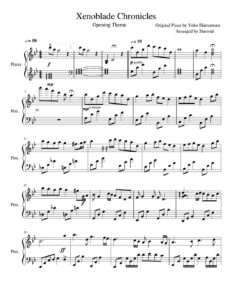 |
|
| Yamaha E443 Songbook digital keyboard PSR-E443 |
 |
|
| Yamaha Keyboard Songbook |
 |
Yamaha Keyboard Songbook |
| Yamaha Keyboard Songbook Song-Buch |
 |
|
| Yamaha PSR E373 YPT-370 PSR-EW310 Song book |
 |
|
| Yamaha Song Book |
 |
Yamaha Song Book |
| Yamaha Song book |
 |
Yamaha Songbook |
| Yamaha Songbook |
 |
Yamaha-Songbook |
| Yamaha songbook 50 Piano Greats for the piano (Yamaha collection) |
 |
50 Piano Greats for the piano (Yamaha collection) |
| Yamaha Songbook Contemporary Vol. 1 |
 |
Yamaha Songbook Contemporary Vol. 1 |
| Yana Bobalik Mysterious Music Я.Бобалік Songbook |
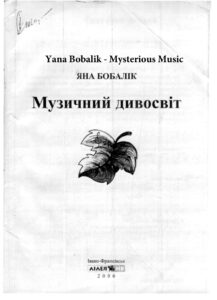 |
|
| Yana Bobalik Secret Music From Mysterious Music Я.Бобалік Таемна Музыка |
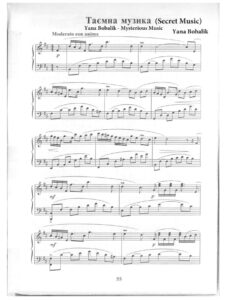 |
|
| Yann Tiersen Rue des Cascades (sheet music) | yann tiersen cascades sheet-music | |
| Yann Tiersen Mother’s Journey |
 |
|
| Yann Tiersen – Tabarly Sheet Music |
 |
|
| Yann Tiersen – Comptine Dun Autre ete | ||
| Yann Tiersen – La Dispute – Amelie Poulain | ||
| Yann Tiersen – La Valse d’Amelie Poulain | Yann Tiersen – La Valse Damelie | |
| Yann Tiersen – Le moulin – Amelie Poulain | Le Moulin – Amelie Poulain | |
| Yann Tiersen – Six pièces pour piano – Volume 2 – Amélie Poulain |
 |
Yann Tiersen – Six pieces pour piano – Volume 2 – Music Sheet |
| Yann Tiersen – Summer 78 | ||
| Yann Tiersen – Sur Le Fil |
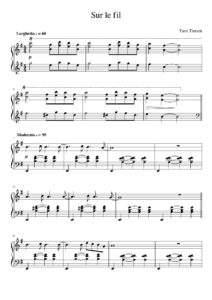 |
|
| Yann Tiersen – Pièces pour piano vol 1 et 2 + divers |
 |
Yann Tiersen – pièces pour piano vol 1 et 2 + divers  |
| Yann Tiersen Eusa 2015 Songbook |
 |
|
| Yann Tiersen J’Y Suis Jamais Alle piano solo (Amélie) |
 |
|
| Yann Tiersen Onze Pièces Pour Piano |
 |
Yann Tiersen Onze Pièces Pour Piano |
| Yann Tiersen Partitions intégrales Piano Works 1993-2004 | Yann Tiersen Partitions intégrales Piano Works 1993-2004 | |
| Yann Tiersen Tabarly Complete Book For Piano |
 |
|
| Yanni In My Time (Piano Solos) Sheet Music |
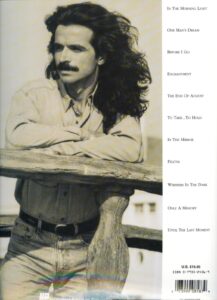 |
Yanni In my time piano solos |
| Yanni One Man’s Dream |
 |
|
| Yanni – Per Piano (Piano book) |
 |
Yanni – Per Piano |
| Yanni – In The Morning Light | ||
| Yanni – Nostalgia | ||
| Yanni – One Man’s Dream (Musescore File).mscz | ||
| Yanni -The Best of |
 |
 |
| Yanni Ethnicity Book |
 |
Yanni Ethnicity Book |
| Yaron Herman – Hallelujah (Leonard Cohen) transcription |
 |
|
| Yashal (Elisa) | ||
| Yasuharu Takanashi – Naruto Shippuden OST – Loneliness |
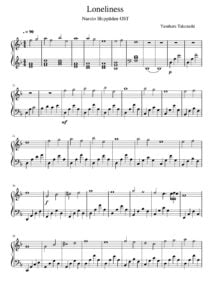 |
|
| Yedidia, Ronn Piano Sonata No 3 outcries (manuscrit) |
 |
|
| Yehezkel Raz Ballerina Piano Solo sheet music |
 |
|
| YES Fragile |
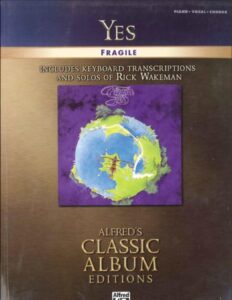 |
YES Fragile |
| YES – Complete Deluxe Edition |
 |
YES – Complete Deluxe Edition |
| Yes Close To The Edge The Story Of Yes (Book) |
 |
|
| Yes The Best Of Guitar Songbook with TABs |
 |
Yes The Best Of Guitar Songbook |
| Yesterday Piano Cello – Piano Sheet Music – Paul McCartney |
 |
|
| Yesterday Piano vocal guitar Songbook Featuring Music From the OST |
 |
|
| Yesterday The Beatles For Jazz Piano (Musescore File).mscz | ||
| Yesterday when I was young (Charles Aznavour) | ||
| Yimkin Law ( Et maintenant on va où OST) Racha Rizk | ||
| Yiruma – 27 May | ||
| Yiruma – Destiny Of Love | ||
| Yiruma – Dream | ||
| Yiruma – Dream A Little Dream Of Me | Yiruma – Dream A Little Dream Of Me | |
| Yiruma – Falling | ||
| Yiruma – First Love – River Flows In You | Yiruma – First Love – River Flows In You | |
| Yiruma – Gabriel |
